The Status of Creative Freedom in Romania
IETM (International network for contemporary performing arts) gets ready to host its Plenary Meeting in Bucharest, Romania, with a particular focus on the current position of the artist in contemporary societies, as well as on the financial and social conditions of pursuing a career in the arts. This series of articles reveals what is to be an artist in today's Romania.—Elena Polivtseva
When addressing the status of artists in Romania, the general conversation tends to be about the low income and inadequate social services for those working in the arts. The creative ecosystem is viewed as unpaired, and therefore worthy of a distinct status within society. The demands are clear and simple: better wages, and benefits adapted to the needs of artistic work—unemployment, medical care, retirement (particularly for ballet dancers), and, ideally, lower taxation of intellectual property. Often the status of “intermittent artists” in France is invoked as best suited for the world of performing arts. None of these exigencies exist today in a functional and sustainable form in Romania.
While the precarity of the creative class is a valid concern for practitioners, equally or more important, in present circumstances, is the creative status of artists in Romania. By this I don’t mean to point at the freedom of expression alone, but at the general climate that allows and stimulates artists to thrive, to experiment, to reach the highest level of their potential, and to push boundaries of artistic expression. The question that I am raising is, how stimulating and free is the context in which artists perform and reflect the world they live in?
The administration that enables artists and artworks to be presented to the public is rarely confronted with the creative achievements of one country, or the artists’ ability to shine and innovate. A web of legal acts, organizational models, grants, and direct appropriations shapes the playground of any artist and cultural professional. Yet the governance of arts and culture speaks volumes about the rights and liberties artists enjoy. When looked at closely, the cultural system in Romania seems to obstruct rather than enable the creative freedom of artists, to close it in predetermined formats, while leaving little room for entrepreneurship and innovation.
The censorship and propaganda during Communism were abolished the moment the Iron Curtain fell. However, by keeping other elements of the system almost intact, little room was left for innovation, experiment, and contemporary creation.
Heritage Explained
By many accounts, Romania has not made dramatic progress in revising the status of the artist since the fall of Communism in December, 1989. The rusty machinery still rumbles, continuing to produce art and to recognize a social status for artists set in place close to seventy years back.
When discussing the status of the artist in today’s Romania, it is important to acknowledge the arch of history that got us here. The status of the arts in society dramatically changed after the Second World War—in Europe by the creation of the welfare state, and in Central and Eastern Europe by Communism. Alongside other domains, the arts in Romania were nationalized, meaning that cultural organizations became fully funded by the government, and artists became full-time employees, similar to any public servant. The system was uniform; all workers were given fixed monthly wages and universal social benefits. All people were equal, therefore their needs were equal as well. Because Romania’s communist regime was particularly harsh, any private initiative in the field of arts and culture was declared illegal.
Reforming the system
Once Communism fell, the system needed to be reconsidered: funding, infrastructure, organizational model of theatres, wages, the “public servant” status, benefits. One major change immediately introduced was the recognition of freedom of expression, guaranteed by the new Constitution of 1991.
In 1996, the Copyright Law was adopted, allowing artists to work on a project basis and to be paid for a specific, single piece of work. This split the legal status of artists in two: freelancer versus full-time employee. The freelancing market was close to non-existent. For the performing arts, however, it created an important alternative.
In 1997, Romania joined a program of the European Council aimed at evaluating national cultural policies. The status of the artist was one aspect researched by both European and Romanian experts at that time. This led to the 1998 publication of the Joint Declaration on the Status of Creators and Performing Artists, a publication edited by the Ministry of Culture and produced in partnership with a wide variety of artists’ unions and NGOs. To date, this remains the most consistent, cohesive effort carried by the government for the issue of the status of the artist.
The only profession whose legal status was re-evaluated in the last twenty-seven years in Romania was that of “public arts managers.” By passing multiple laws, the government gave public arts managers a distinct status that places them between public servants and freelancers—while they are hired by a public cultural institution, they benefit from universal social service, and enjoy the liberty of negotiating their contracts, something no other employee can do.
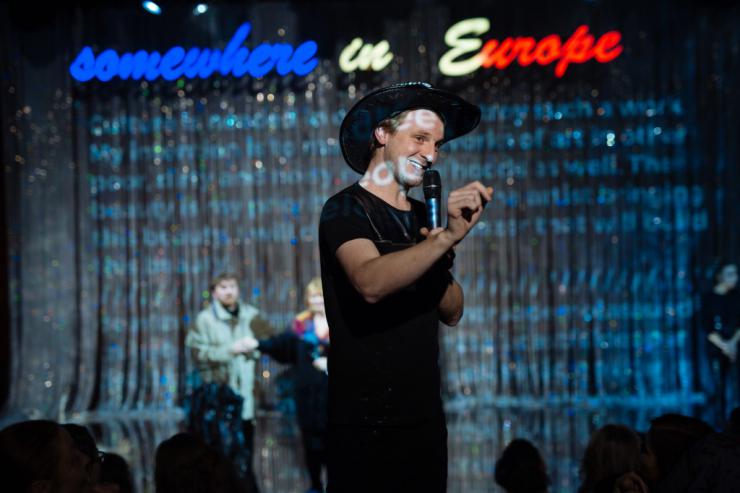
The Politicization of a Cultural System
These changes mean little when seen with the depoliticization of public cultural institutions. Although difficult to quantify, probably more than 90 percent of cultural organizations in Romania are public institutions funded mainly through direct appropriations. Accurate information is not available, since Romania’s cultural policy has never been driven by facts and research. The cultural infrastructure network in place today is almost identical to the one existing in 1989. Funding is secured by tradition, with no performance evaluation whatsoever. Sponsorship and private giving are modest on a national level, and rather discouraged by public cultural organizations and government alike.
One might perceive the situation as ideal: governmental funds awarded without competition, securing a wide network of organizations and permanent jobs for artists, and making art accessible to people from all walks of life. The on the ground reality is different. Artists live on wages barely in tune with living costs. Direct appropriations are maintained regardless of the performance of cultural organizations because indirectly they serve a political purpose. Underserved communities remain marginalized by both organizations and artists, as well as by politicians in general.
Creative Freedom
The censorship and propaganda during Communism were abolished the moment the Iron Curtain fell. However, by keeping other elements of the system almost intact, little room was left for innovation, experiment, and contemporary creation. The deep change in Romanian theatre happened naturally, and coincided with the rise of a new generation of young artists. The year 2000 represents a changing point in this sense. Gianina Cărbunariu, Peca Ştefan, Radu Apostol, Mihaela Michailov, Ana Mărgineanu, Carmen Lidia Vidu, Andreea Vălean, and Radu Afrim are some of the artists that gave force to a new wave of Romanian theatre.
Many emerging artists were rejected by mainstream public institutions because they worked with contemporary plays, often opting for minimalism, depicting marginal stories and everyday characters, and using street language. In some cases, the artists were the ones refusing to work on traditional Italian box stages, and to be associated with the old state of politics. Instead, they infused an energetic counter-current into the very few private theatres existing at the time, and even fewer public ones where leadership took on the risk to support them. This natural change happened not only in theatre, but in film and visual arts as well. These formed a critical voice, filling the void in the civil society.
While freedom of expression is not brutally repressed, artists and projects can be constrained by being refused funding up front, or by having funding removed when works are deemed controversial. In 2011, for example, a play staged at the Hungarian Theatre of Cluj was stopped, presumably because it tackled the controversy around the Rosia Montana mining project, a project that rallied thousands of people against it. The manager denied the accusations, while also suggesting that young artists might act “against the Romanian state” and against the theatre.
It is not rare for young artists to be denied the right to fair pay for their work: young directors might not be paid for staging a play, while young actors might be refused fees for performing in a theatre festival. As the majority of public theatre managers are artists over fifty years old—men, usually—it is also not uncommon for them to intervene in the creative process of a young team of artists, deciding that it is not good enough and that he/she will take over the creative leadership for that particular project.
It is not common for artists to openly discuss and debate abusive actions from public theatre managers, or political interference. One can only hear such things over a drink, from a friend, or a friend of a friend who knows someone who experienced something similar. The Romanian theatre scene remains a small, closed world, and open conflicts might very well end one’s career.
The Unique Source of Funding
The challenge for artists comes from having to negotiate their artistic endeavors with the theatre manager solely. There are no higher decision-makers when it comes to a public theatre funding a project—no open competition and no juries. The manager, on the other hand, owes the funding of a theatre to one single entity, and that is the government, be it the Ministry of Culture or county or city councils. This dependency on a sole source of income puts the theatre in a most vulnerable position: that of not having an alternative if it doesn’t comply with the norm. Managers have become privileged elites whose main role is to keep the balance between the government and artistic work. It is the reason why management positions in public cultural institutions continue to be highly politicized roles.
The opaque bastion of government appropriations is counterbalanced by one arm's-length funding body: the Administration of the National Cultural Fund (AFCN). Since its creation in 2005, the AFCN has been the main source of funding for private initiatives—private theatres or informal groups or artists grouped around an NGO. Through open competition and a peer-review system, AFCN is acknowledged as the entity that stimulated the most contemporary creation, young artists, and visionary projects addressed to underserved communities. Its budget represents close to 1.6 percent (around $1.4 million) of the total appropriations of the Ministry of Culture alone.
A quick glimpse at the theatre landscape in Romania depicts a rather discouraging picture. Of the approximately fifty-five dramatic public theatres and seventeen public theatres for children and adolescents, about ten to fifteen are considered good in terms of artistic production. A fraction are seen as progressive. They are usually in major cities like Bucharest, Timisoara, Cluj, and Sibiu. The rest are mainly political territories, and not places for vibrant creativity and community engagement.
Romania remains a controversial country. While being one of the poorest countries in Europe, it funds the third largest theatre festival in the world. While having this wide spread network of public cultural institutions and investing considerably in cultural appropriations, it still shows the lowest rates of cultural participation in Europe. While praising its art domestically, isolationism remains one of the major challenges, as research showed when I was contributing to the first city cultural strategies in the country in 2014 and 2015. The same can be said about brilliant talents leaving the country for places with more opportunities such as Berlin, London, or Paris, and even the US. Against all odds domestically, Romanian artists gained international acclaim, especially in film and visual arts.
When looked at closely, the cultural system in Romania seems to obstruct rather than enable the creative freedom of artists, to close it in predetermined formats, while leaving little room for entrepreneurship and innovation.
Changes Need to be Made
The national policy over the last twenty-seven years has been to preserve the infrastructure, not to stimulate contemporary creation nor encourage collaborations; not to praise diversity of minds, not to improve the status of the artist. With a privileged elite of public arts managers and politicians, and a public budget generous enough to support the network of public theatres, the system has no real incentive to change.
A real change to the status of artists cannot be attained without changing the funding mechanisms for public and private theatres alike based on open competition and matching funds. I am not an advocate for budget cuts in the arts, but I am an advocate for transparency, competition, and peer review in distributing public funds. A mix of direct appropriations and grants awarded based on competency and impact in the arts world and society might be just what Romania needs. Artists will be given a dignifying creative status and the material conditions to leave the “public servants” status to the past. It will not be an easy thing to achieve, since this system will be designed to compensate achievement and eliminate passiveness. Political interference will be diminished, and so will be the political influence of public arts managers.
A simulation of such a policy, carried throughout several years, will show just how successful or flawed the new funding model will be. For liberal democracies, such as the US, this might sound like a reasonable thing to do. Yet the US faces a reverse challenge: a beacon for democracy, the National Endowment for the Arts, alongside the National Endowment for the Humanities, and the Corporation for Public Broadcasting are threatened with severe budget cuts by the new administration.
If change will happen in Romania, it will be carried by artists striving for a more democratic society and freedom of expression on one side, and public theatre managers and politicians whose interest will be to preserve the status quo on the other side. With rising nationalism and populist cultural events preferred over innovation, diversity, and freedom of thought, change might have to wait a bit longer in the wings of history.
Post scriptum: Starting on February 1, 2017, wages for full-time employed artists and technical staff were raised by 50 percent. It was one of the first measures adopted by the new social democratic government, voted in December 2016—the government that generated the largest street protests after the fall of communism, against endemic high-level corruption. The national minimum wage was also raised from $290 to $335 per month (gross). This recent measure does not change the analysis of my essay. Since there is no impact assessment, it is hard to advance any provision for the performing arts sector. However, one concern is that the 50 percent raise will lead in fact to budget cuts for production, which will eventually affect the artistic outcome, and have a negative impact on the already fragile job market for freelance artists.

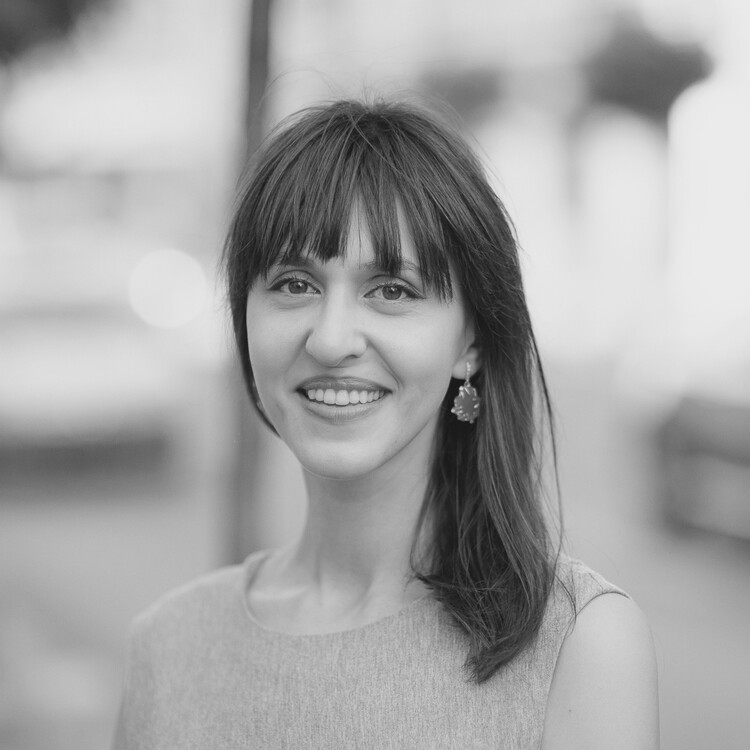
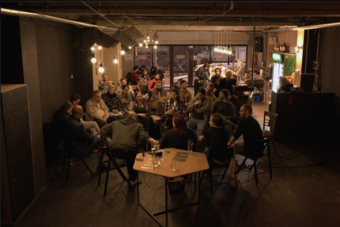

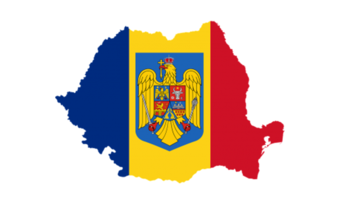

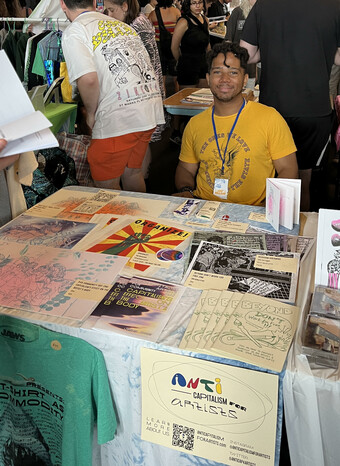

Comments
The article is just the start of the conversation—we want to know what you think about this subject, too! HowlRound is a space for knowledge-sharing, and we welcome spirited, thoughtful, and on-topic dialogue. Find our full comments policy here